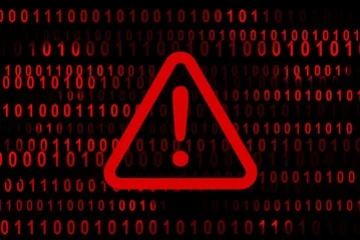CISA Warns of Cybercriminals Exploiting Linux Kernel Security Vulnerabilities

LinuxSecurity discovered and identified various network security issues that cybercriminals could utilize as exploits in cybersecurity that can severely harm the productivity of a business. Cloud security breach opportunities can significantly impact companies by causing memory exhaustion, system crashes, data loss, and arbitrary code execution. Even worse, Denial of Service (DoS), Cross-Site Scripting (XSS), and privilege escalation attacks can impact an organization’s runtime, reputation, and trustworthiness.
The Cybersecurity and Infrastructure Security Agency (CISA) keeps track of the most common, frequent, and active attacks in network security in their Known Exploited Vulnerabilities Catalog so that businesses can prepare their company before the network security threats reach their system. Users must implement frequent Linux kernel security updates to protect their systems' confidentiality, integrity, availability, and sensitive data. This article will discuss the various Common Vulnerabilities and Exposures (CVEs) entering kernels, their impacts on data and network security, and how security patching can strengthen an organization's ability to combat these risks.
What Vulnerabilities Have Been Found in the Linux Kernel?
There are various network security issues to remember, so patch your kernel to prevent these issues from harming your business. Cybercriminals frequently install malicious code on a server or formulate a Denial of Service attack. The National Vulnerability Database rated many cybersecurity vulnerabilities so that you know how they impact your company's confidentiality, integrity, and availability.
Here are some of the cloud security breach opportunities our IT security professionals have discovered and patched in the Linux kernel as of late:
CVE-2023-0266
The most recent exploits in cybersecurity resulted from CVE-2023-0266, a use-after-free vulnerability that has existed in the Advanced Linux Sound Architecture (ALSA) subsystem for a while now. The CISA has evidence of this cloud security breach remaining active across servers.
CVE-2023-0045
This CVE can expose an organization's sensitive information if users do not appropriately configure the LinuxSecurity kernel settings. Indirect branch prediction attacks can result from incorrectly setting up the System V IPC implementation.
CVE-2023-0394
In specific situations, IPv6 can contain a NULL pointer dereference vulnerability that can permit local threat actors the ability to harm a company’s productivity and reputation.
CVE-2023-23455
Having a confusion vulnerability implemented as an ATM VC queuing discipline can negatively impact online communications should a cybercriminal abuse these exploits in cybersecurity.
CVE-2023-23559
This integer overflow vulnerability, installed on RNDIS USB drivers in the Linux kernel, can give local attackers with physical access the ability to plug in malicious USBs to hack servers.
CVE-2023-28328
Cybercriminals install the DVB USB AZ6027 driver and its null pointer dereference for handling specific messages in user space.
CVE-2022-3434
Local attackers can infect SGI GRU drivers with use-after-free vulnerabilities to execute various network security threats.
CVE-2022-36280
VMware Virtual GPU DRM drivers in the Linux kernel contain out-of-bounds write cybersecurity vulnerabilities that threat actors can utilize to their advantage in an attack.
CVE-2022-41218
Use-after-free vulnerabilities can result from a DVB Core driver not properly performing reference counts.
CVE-2022-47929
In a few situations, network queuing discipline implementation in a Linux kernel led to null pointer dereferences harming a server.
CVE-2022-2196
The KVM VMX implementation in the kernel did not correctly handle indirect branch prediction isolation between L1 and L2 VMs, allowing for speculative execution attacks in network security.
CVE-2021-3669
System V IPC misconfigured large shared memory counts, and now a Linux kernel could suffer from memory exhaustion.
Knowing these network security issues and how they can impact your organization is vital to combating threats. You can use various methods to prevent these exploits in cybersecurity from becoming detrimental to your server and causing your system to suffer long-term damage.
How Can I Fix These Common Linux Kernel Vulnerabilities?
 Mitigate these network security risks by following various Linux security best cybersecurity practices that can prevent significant downtime, account compromise, and cloud security breaches. Here are some suggestions we offer to you so you can start to improve your security posture:
Mitigate these network security risks by following various Linux security best cybersecurity practices that can prevent significant downtime, account compromise, and cloud security breaches. Here are some suggestions we offer to you so you can start to improve your security posture:
- Update your systems regularly. If you leave your servers outdated, the built-in cloud security frameworks will not have solutions to the latest security news issues. Then, your server could face significantly large attacks on network security. With an update, your company will know threats immediately, and your system can combat them quickly.
- Utilize privacy sandboxing to identify cybersecurity vulnerabilities. Once you notice these issues, you can use Linux patching to take care of the risk before a cybercriminal can exploit the hole.
- Follow security news websites, blogs, and chat pages so that you can stay up-to-date on network security threats that IT security professionals discover weekly. There are so many new cybersecurity vulnerabilities, types of ransomware, and other attacks in network security that get identified frequently, and knowing up-front is one extra step you can take to protect your company, employees, and users.
- Register as a LinuxSecurity user to get Linux-specific information about open-source programs and applications you can use to customize your server and stay notified regarding threats to your distros.
- Follow @LS_Advisories on X for real-time updates on advisories related to distros.
Linux security Expert and Website Founder Dave Wreski warns, “Threat actors frequently exploit unpatched security vulnerabilities to gain access to corporate networks, enable malicious code, and compromise critical systems. It is crucial that all admins and organizations track security advisories diligently and apply patches as soon as they are released.”
Stay Up-to-Date on Linux Security Vulnerabilities
As cybercriminals develop new ways to implement malicious coding, Denial of Service attacks, and other network security issues into servers, organizations must learn how to combat the threats and prepare themselves for any possible exploits in cybersecurity. We encourage you to subscribe to our weekly newsletters to stay up-to-date and help improve your security posture against pending issues. As a Linux user, the best way to remain in the loop is to adhere to the practices we mentioned above so you can get Linux-specific updates, security news, and more without overlooking any weaknesses.





















